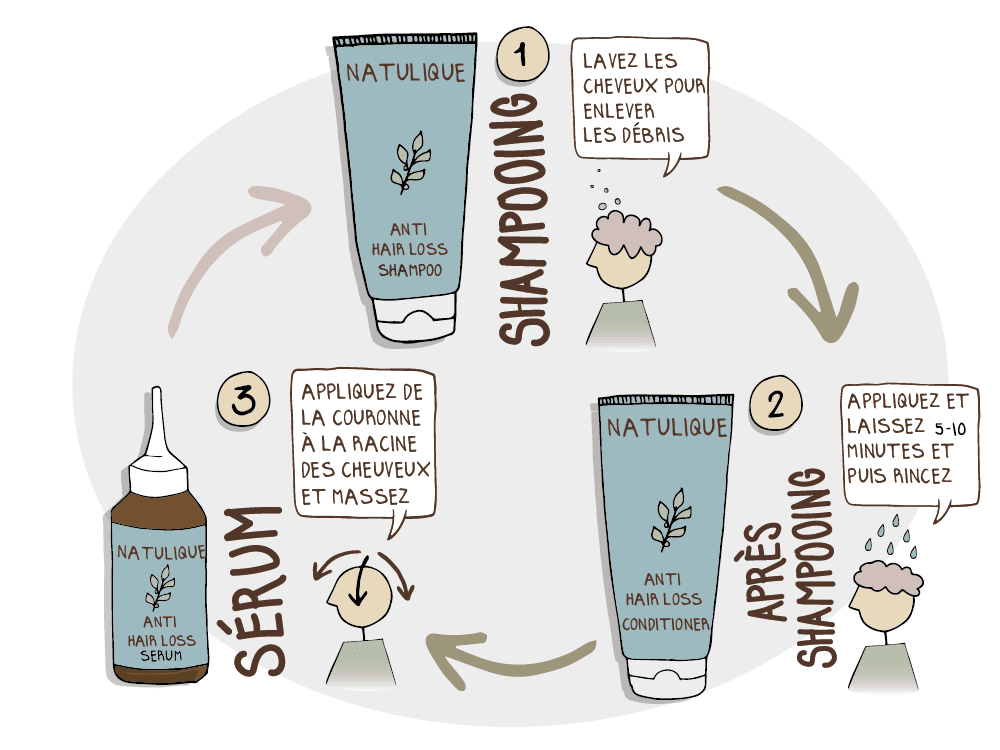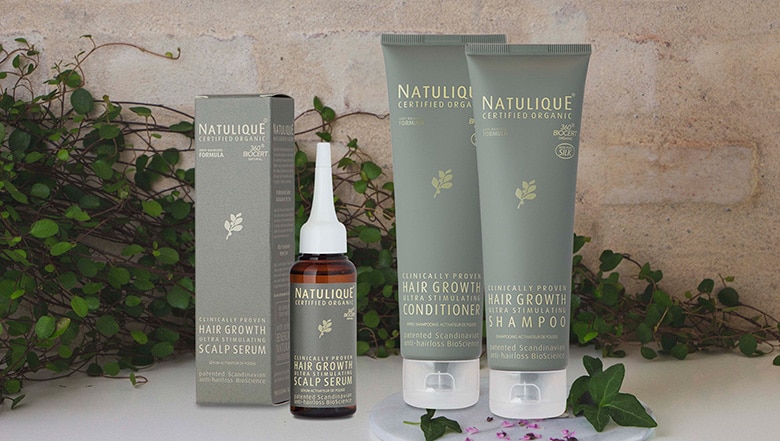Introduction
Presentation of the subject
Hair care is an essential routine in our daily lives. However, it's common to make mistakes when washing hair, which can have detrimental effects on hair health. In this article, we'll explore common mistakes to avoid to preserve the beauty and health of your hair.
The importance of a good hair wash
Proper washing not only cleanses the hair, but also maintains the balance of the scalp and promotes healthy hair. A poor wash can lead to problems such as dryness, scalp irritation and even hair loss. So it's vital to understand the steps to follow for optimal care.
Common shampoo selection mistakes
Use of overly aggressive shampoos
Consequences for the scalp
Overly aggressive shampoos, often loaded with sulfates and other chemicals, can strip the scalp of its natural oils. This leads to excessive dryness and irritation, which can cause itching and dandruff. Over the long term, the use of such products can weaken hair roots and lead to hair loss.
How to choose the right shampoo
To avoid these problems, we recommend choosing a gentle, sulfate-free shampoo formulated with natural ingredients. These shampoos respect the balance of the scalp and preserve the hair's natural moisture. Always check the list of ingredients before buying, and opt for dermatologically tested products.
Use of a shampoo unsuited to your hair type
Recognizing your hair type
Knowing your hair type is essential to choosing the right shampoo. Hair can be described as dry, oily, normal, fine, thick, curly or straight. Each hair type has specific care and product needs.
Which shampoo to choose for your hair type
For dry hair, opt for a moisturizing shampoo based on coconut or argan oil to deeply nourish strands. Oily hair will benefit from a clarifying shampoo, preferably with a green tea or citrus base to regulate sebum production. Fine hair may need a volumizing shampoo, while curly hair may require a silicone-free shampoo that keeps curls defined and frizz-free.
Common application errors
Excessive application of shampoo
Risks to hair
One of the most common mistakes made when washing hair is the excessive use of shampoo. Many people think that more lather means better cleansing, but this is a common misconception. In reality, too much shampoo can make your scalp and hair drier. This can lead to an imbalance of natural oils, leaving your hair fragile and dull.
The ideal amount of shampoo to use
To avoid these inconveniences, it's important to use just the right amount of shampoo. In general, a walnut-sized amount is sufficient for short and medium-length hair. For long hair, a quantity equivalent to two walnuts may be necessary. Apply shampoo evenly to the scalp rather than the length of the hair, as this is where the need for cleansing is greatest.
Poor shampoo rinsing
How to rinse your hair properly
Rinsing is a crucial step that is often overlooked. Poor rinsing can leave product residues on the scalp, leading to build-up, itching and a dull appearance. Rinsing should be done with care, using lukewarm to cold water to thoroughly remove all traces of shampoo. This method also helps to close the hair cuticles, giving it a shiny, healthy appearance.
The consequences of insufficient rinsing
Improper rinsing can cause product build-up that prevents hair from breathing properly. This can lead to scalp problems such as itching, irritation and even dandruff. Hair can also appear greasy even after a recent wash. What's more, this build-up reduces the effectiveness of subsequent hair treatments, as it forms a barrier that prevents other products from penetrating properly.
Poor shampoo distribution
Why it's important to distribute shampoo correctly
In addition to excess shampoo, poor distribution is also a common mistake. If the product is only applied to part of the scalp, some areas will remain poorly washed, while others will be attacked. This can lead to skin imbalance and unevenly distributed hair texture.
How to distribute shampoo effectively
For even distribution, first emulsify the shampoo between your hands before applying to the scalp. Start at the top of the head and massage gently with your fingers, using circular movements towards the back of the head. Avoid using your fingernails to avoid irritating the scalp. Make sure the product reaches all areas. You can then let the mousse glide over your lengths when rinsing, without adding any additional product.
See also: Mistakes not to make when bleaching at home
Common mistakes after washing hair
Aggressive hair drying
How to dry your hair properly
Drying hair is an often underestimated step, but it has a considerable impact on its health and appearance. The most common mistake is to dry hair aggressively, using a towel to rub it vigorously. This can lead to hair fiber breakage and frizz. The best method is to gently dab your hair with a microfiber towel, which absorbs excess water without damaging the hair cuticle. For air-drying, we recommend detangling slightly damp hair with a wide-tooth comb.
The negative effects of drying too quickly
Using a hair dryer with excessive heat is also a common mistake. Intense heat can dry out your hair and damage its internal structure. To minimize damage, set your hair dryer to a low or medium temperature and keep it at least 15 centimeters away from your hair. It's also a good idea to use a diffuser to avoid direct exposure to heat. What's more, opting to use thermal protectors before any blow-drying helps protect hair from heat.
Neglect of post-wash protection
Use of protective products
Another mistake after washing is not to apply protective products or additional care. Once washed, hair needs to be protected and nourished to maintain its shine and strength. We recommend using serums or hair oils to moisturize lengths and ends. These products not only moisturize, but also form a barrier against external aggressors such as pollution, wind or UV rays.
The benefits of revitalizing treatments
Regular application of masks or revitalizing treatments can also be beneficial. A nourishing hair mask, applied once a week, can restore moisture and strengthen hair fibers. Opt for formulas enriched with proteins and vitamins such as keratin, which repairs damaged hair. Similarly, for people with color-treated hair, intensive care preserves color and prevents it from fading prematurely.
Wrapping wet hair
Why not sleep with wet hair
It can be tempting to skip the thorough blow-drying step before going to bed. However, sleeping with wet hair can lead to brittle locks and a frizzy texture when you wake up. Moisture trapped in a pillow can also encourage the proliferation of bacteria and mites, which can irritate the scalp and lead to infections.
Alternatives to minimize risk
If you absolutely must sleep with damp hair, use a silk or satin pillowcase. These fabrics offer less friction with the hair and help it retain its softness. You can also braid your hair beforehand to reduce breakage and keep it in place. However, make sure your hair is sufficiently towel-dried to reduce humidity build-up.
In short, a good post-wash routine not only preserves the health of your hair, but also improves its aesthetic appearance. Investing in the right tools and following the right processes contributes to the overall health of your hair.
Common washing frequency errors
Washing hair too often
The impact of daily washing
A common mistake is to wash hair too often, sometimes on a daily basis. This habit can eliminate the essential natural oils that protect the scalp and nourish the hair, leading to excessive dryness and brittle strands. Too many washes can also disrupt the scalp's natural microbiota, leading to dandruff and irritation.
What is the ideal washing frequency?
The ideal washing frequency depends on hair type and lifestyle. In general, three to four washes a week are sufficient for the balance of most hair types. For very dry or thick hair, two washes a week may be sufficient to avoid drying out. In the event of intense physical activity, rinsing with clear water is often enough to refresh hair without the need for systematic shampooing.
Insufficient hair washing
Recognizing the signs of inadequate washing
Conversely, washing hair too infrequently can lead to the build-up of dirt, oil and product residues on the scalp. This leads to dull, greasy and sometimes itchy hair. Signs of insufficient washing include a feeling of heaviness, difficulty styling the hair and an uncomfortable scalp.
Tips for optimal washing
To avoid sebum build-up and maintain scalp health, it's crucial to find the right balance. Use gentle, respectful cleansing products for your usual washing frequency. These help to gently purify without stripping hair of its essential natural oils.
Hair washing FAQs
How often should I change my shampoo?
It's advisable to change shampoos every few months or when your hair needs change. This avoids the phenomenon of habituation, where your hair seems less responsive to the benefits of your usual products.
How do I know if I'm using the wrong shampoo?
If you notice increased itching, dandruff or unusual dryness after washing, your shampoo may not be suitable for your scalp or hair type.
Is cold water best for washing hair?
Warm water is generally ideal for washing hair, as it helps dissolve sebum and impurities. A final rinse with cold water can help seal hair cuticles and add shine.
Are dry shampoos good substitutes?
Dry shampoos can be used between washes to absorb excess sebum. However, they are not a substitute for a conventional shampoo, nor do they cleanse the scalp thoroughly.
Can I use conditioner with every wash?
It's beneficial to use a conditioner with every wash to detangle, moisturize and protect hair, especially for dry or color-treated hair. Choose a product suited to your hair type for best results.





